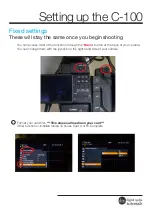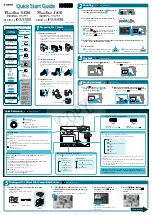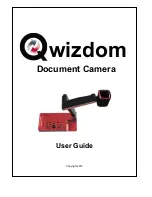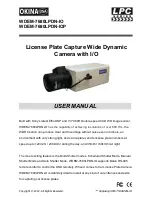
User Manual
Wildcat
Company confidential.
This document is the property of Xenics. It may not be reproduced
–
completely or partially
–
or passed to a third
party without written permission from Xenics.
Xenics nv
T +32 16 38 99 00
Doc Ref: ENG-2020-UMN001
Ambachtenlaan 44
F +32 16 38 99 01
Issue: R001
BE-3001 Leuven
Belgium
www.xenics.com
Date:
XF-104_03/20-12-2012
Page 42 of 58
Black clip
and
White clip
will clip the
corrected
sensor output to these ADU values. The
final ADU value after other image processing options are applied (see Chapter 5.4) may be
different.
Dynamic range
impacts how the 16-bit ADU value sent from the camera will be mapped.
If set to
Sensor
, the maximal dynamic range is used. The above clipping range is used to
determine which ADU values can be attained.
If set to
Camera
the algorithm will rescale the 16 bit ADU range so the
Black clip
value is
mapped to 0 ADU and the
White clip
value is mapped to 65535
(= 2
16
− 1)
ADU.
The initial optimal values for
Black clip, White clip
and
Dynamic range
are stored in the
calibration slot. You can tweak these settings at will without overwriting the stored settings.
The corresponding camera registers for on-board calibrations may be found in Chapter 0.
Applying a software calibration via Xeneth
Calibration files can also be applied on a software-level in Xeneth. These calibrations
function in exactly the same way as the on-board calibrations.
Please refer to the Xeneth User Manual in the Xeneth installation directory for more details
on loading software calibrations.
Note that for software calibrations the camera has to be configured with
Image correction
control
– Raw mode
set to
True
(see Chapter 5.4). Xeneth needs to receive unprocessed
frames to be able to apply the calibration data correctly.
















































